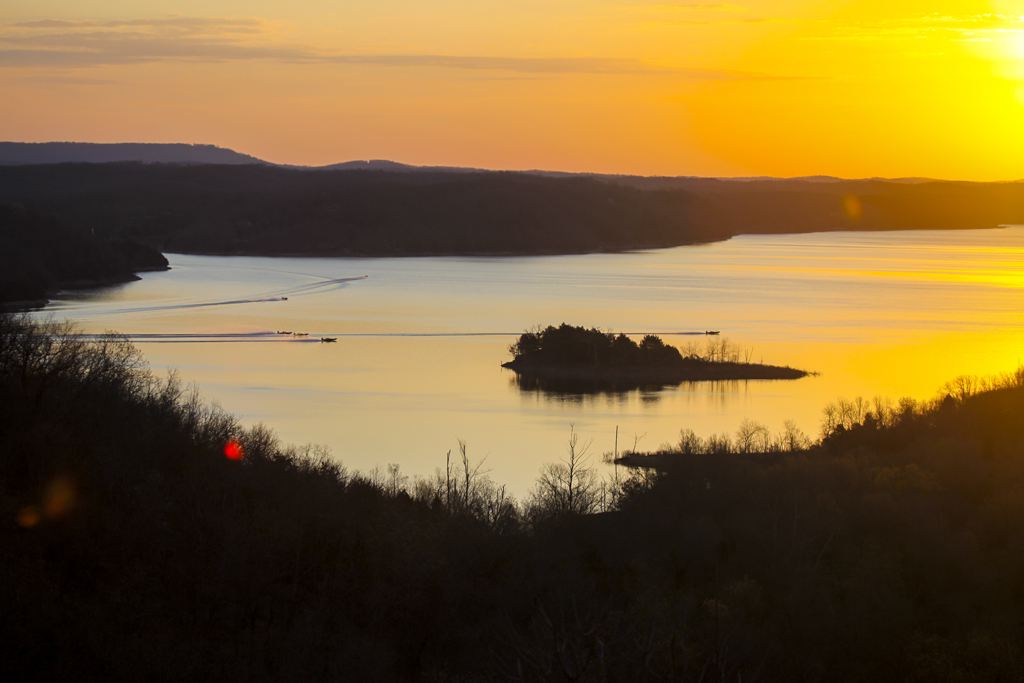Spawn Looming at Beaver Lake
Bedding bass could be a factor at Tour stop No. 3

As the pros who fish the Walmart FLW Tour begin practice on Beaver Lake, this jewel of northwestern Arkansas could be setting up for another spring spawn showdown.
But first, a lake snapshot:
The inaugural White River reservoir, Beaver Lake stretches approximately 73 miles long and two miles wide at its widest point. With approximately 28,300 surface acres, the Beaver offers 450 miles of shoreline for anglers to fish. The water temperature is in the low 60s with 6 to 10 feet of visibility.
Impounded in 1966 by the U.S. Army Corps of Engineers, Beaver presents a diverse menu of habitat, with several primary creeks arms and secondary creeks. There’s a mix of the usual shallow, woody river habitat and deep, clear waters near the dam.
Healthy and Heavy
Shane Long, a Rayovac FLW Series Central Division standout from Willard, Mo., has spent a lot of time on Beaver. In terms of bait, water quality and fish abundance, the lake’s as healthy as he’s seen it in several years.
Tour pro Wesley Strader agrees and points to the flood of 2011 as a significant contributor to the present bounty.
“They had a high-water spawn about four years ago, and that really helped the lake,” he says. “You can see how that affected the quality of the fish.
“The high water rejuvenated the lake [following a drought period], and they had a good rearing year,” Strader continues. “There were a lot of trees and bushes in the water. The lake stayed up for the whole summer, so the fry really had a chance to grow and survive.”
The lake’s mix of smallmouth, spotted and largemouth bass remains well represented, but Long says the largemouths are taking center stage nowadays.
“For several years it was mostly smallmouths and spots in tournaments, but in recent years the largemouths are becoming more prominent,” he says. “The big spots are not as plentiful, but the largemouths are more plentiful, so that is helping the tournament weights.”
The Spawn is On
Long says the Beaver fish started spawning in early April, but he suspects the tournament will see the continuation of bedding season, as well as some postspawn movement.
“There are going to be a lot of fish that are done spawning and moving out, but there will probably be another wave coming up,” Long says. “I think there’s a good chance it will be a sight-fishing tournament.”
Strader’s also optimistic about this possibility, but he’s keeping an eye on the weather.
“I’m pretty sure it will be a spawning tournament, but the water is rising and the fish tend to stall a little when this happens,” he says. “But if the water stabilizes, the fish might be spawning during the tournament.”
Community Holes and Options
The takeoff area in Prairie Creek is usually good for a few bites because of all of the release fish that tarry there – it factors into just about every Tour event that takes place on Beaver. Most anglers keep this area in mind as a safety valve to fill out a limit.
For the first two days of the tournament, Long expects to see anglers fishing a mix of river and main-lake spots, with the latter becoming more prominent later in the event as shallow fish upriver get picked off in the early days of competition.
Strader likes the options that Beaver presents.
“If you want to fish dingy water, you can run up the river. If you want to fish clear water, you go to the dam. If you want to fish the medium clarity, you stay near the Prairie Creek area,” he says.
If the spawn does become the main deal, rock transitions where edges of pea gravel, chunk rock and big boulders meet are the types of targets Strader will seek.
Sight-fishing with tubes, craws and finesse worms is hard to beat, but Strader points to drop-shots and shaky heads as solid Beaver options. Covering water with a spinnerbait can reveal active areas.
For bedding smallies, Long suggests small swimbaits or grubs on light ball-head jigs.
What it Takes to Win
Strader says an angler will need 11 to 11 1/4 pounds a day to make the cut and about 14 to 15 a day to win. He’s not looking for any 20-pound bags, but neither he nor Long are ruling out the possibility.
“Twenty-pound bags are not common on Beaver Lake,” Long says. “But if a guy found the right five and he was looking at them, it could happen in a hurry.”
Notably, with a likely mix of the three black bass species, amassing a big sack might be easier than normal.
“If those big smallmouths are on the beds, they could really play in this tournament,” Long explains. “Also, there are some extremely large spotted bass [4- to 5-pounders] that you never see until they come up to spawn.”
Balancing Beaver’s opportunity, Strader points to a couple of relevant considerations.
“The biggest concern I’d say will be weather,” Strader offers. “The river can muddy up pretty quickly, and for anybody who’s up there, this can hinder sight-fishing.”